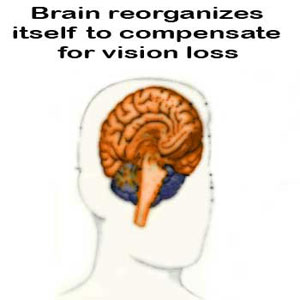
This study by Georgia Tech was conducted on 13 volunteers. They had to undergo a series of tests which were specially designed to activate the volunteers’ peripheral regions and their brain activity was measured with a functional MRI.
Eric Schumacher, assistant professor in Georgia Tech’s School of Psychology says that, “Our results show that the patient’s behavior may be critical to get the brain to reorganize in response to disease. It’s not enough to lose input to a brain region for that region to reorganize; the change in the patient’s behavior also matters.â€
The above mentioned change of behavior comes when patients suffering from macular degeneration, a disease where damage to the retina causes patients to lose their vision in the center of their visual field, compensate for this loss by focusing with other parts of their visual field.
With MRI’s, they found that when patients visually stimulated another part of their retina, an increase in brain activity in the visual cortex was noticed. This increase was noticed in the same parts of the visual cortex that are normally activated when healthy patients focus on objects in their central visual field. Thus they assumed that the brain had accordingly reorganized itself.
Previous research on this particular topic has yielded negative results. Some of the studies recommended that the visual cortex reorganizes itself, however others didn’t agree to it. Schumacher along with other researchers tested whether the patients use of preferred retinal locations, is somehow associated to the reorganization in the visual cortex.
Other studies have revealed that the brain can reorganize itself accordingly. However, this is the first study of its kind to reveal that this reorganization of the brain in patients is linked to patient behavior.
The researchers are currently trying to figure out how long this reorganization takes and also that can it be achieved through low-vision training.
This study appears in the Restorative Neurology and Neuroscience issue. It was funded in part by a seed grant from the Georgia Tech/Emory Health Systems Institute.
